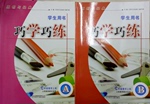题目内容
I could have easily gone through life without getting to know one of the most romantic feelings---love for a dog.
For at least ten years my _______ had been suggesting that we get a dog. There were several reasons why the idea _______. We had noticed that, on our block, couples with no children as a rule _______ one large or two small dogs. So we got one puppy _______ we too had no children.
He flew into the house with the _______ of a Formula 1 (一级方程式赛车). In several minutes he ran over all the house, _______ from my shoulder onto the bed, and ended up in the _______, where my wife washed him with motherly _______. From that day on, the invisible(看不见的) _______ for the love of the new member of our household began at my home.
He seemed to ________ that at once. Most of the meals that my wife had ________ for him with greater care than those for me—he didn’t ________ look at.
Every evening I went out walking with him. I could not know who was walking whom ________ one evening, when, tired from work, I ________ the walk. The dog was very angry and dragged me out.
Last night our dog pulled me by the ear with his teeth, ________ me up in my dream, and dragged me into the kitchen to make me turn off the ________ which had disturbed(干扰) his sleep. I meekly(乖乖地) ________ that I had forgotten to switch off the light, but that was not ________. He looked at me like a teacher at a pupil who repeatedly makes ________.
Now we finally know who’s the ________ at home, and for twenty years we had seriously argued whether it was my wife or I.
1.A. wife B. son C. husband D. daughter
2.A. came up with B. came out C. came up D. came on
3.A. kept B. rose C. carried D. invited
4.A. if B. unless C. since D. before
5.A. speed B. shape C. cost D. race
6.A. climbed B. jumped C. covered D. stopped
7.A. yard B. street C. bathroom D. kitchen
8.A. worry B. care C. identity D. power
9.A. signal B. work C. war D. truth
10.A. doubt B. understand C. wonder D. dislike
11.A. reached B. searched C. looked D. prepared
12.A. even B. still C. ever D. yet
13.A. while B. because C. until D. as
14.A. gave in B. gave up C. gave away D. gave out
15.A. broke B. woke C. picked D. packed
16.A. water B. heater C. cooker D. light
17.A. hoped B. considered C. admitted D. decided
18.A. enough B. good C. bad D. true
19.A. plans B. mistakes C. decisions D. faces
20.A. boss B. member C. adult D. child
 巧学巧练系列答案
巧学巧练系列答案

 ),并在其下面写出该加的词。
),并在其下面写出该加的词。 -hour walking tour,we share these special comers of NYC.
-hour walking tour,we share these special comers of NYC.